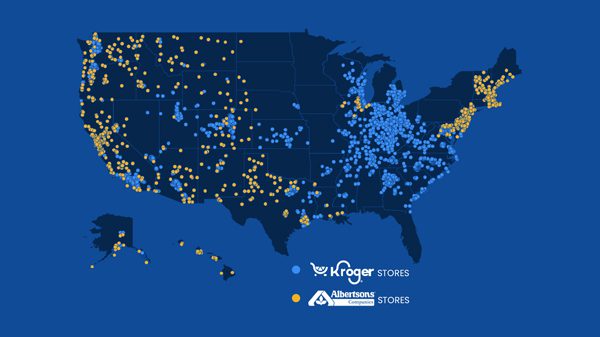The proposed merger between retail grocery giants Kroger BB #:100073 and Albertsons BB #:193326 is acquiring an extensive collection of enemies. https://www.nytimes.com/2023/01/23/business/kroger-albertsons-merger.html
Growers’ organizations, for example. https://www.producebluebook.com/2023/01/11/western-growers-joins-other-grower-groups-in-opposing-kroger-albertsons-merger/ This includes Western Growers, the California Fresh Fruit Association and Colorado Fruit & Vegetable Growers Association.


Also a group of 25 consumers from 11 states, who have launched a lawsuit against the merger in the U.S. District Court for Northern California. https://fingfx.thomsonreuters.com/gfx/legaldocs/gkvlwdlrbpb/kroger-complaint-ndca-2023.pdf
The latest entrant on the merger’s enemy list is the Arizona Attorney General, which is launching an investigation into the proposed merger. https://arizonadailyindependent.com/2023/02/16/arizona-attorney-generals-office-to-investigate-proposed-merger-of-albertsons-and-kroger/
And of course, the Federal Trade Commission is launching an investigation of its own. Much of it will focus on the effects on workers. https://news.bloomberglaw.com/antitrust/kroger-albertsons-merger-tests-ftcs-focus-on-labor-competition
If a merger goes through, the combined entity will divest itself of a number of stores to alleviate antitrust concerns. How many? Oh, I don’t know…100…250…300…375…650…750… These figures were all mentioned in the same Reuters article discussing the proposed step. Kroger-Albertsons divestitures come into focus – Produce Blue Book
The same article indicates that at present the two entities operate 4,996 stores nationwide.
The backdrop to this picture involves the previous merger of retail grocery chains Safeway and Albertsons in 2016, which didn’t go so well.
Reuters reports: “FTC Chair Lina Khan has cited the failure of divestitures in a previous supermarket merger involving Albertsons and Safeway as a reason for the agency to be skeptical about the merits of such move. When Albertsons agreed to the $9 billion acquisition of Safeway in 2014, it got regulatory clearance by signing a deal to sell 146 stores to West Coast regional grocer Haggen for $300 million. Haggen filed for bankruptcy months later and blamed the deal with Albertsons for its demise. Albertsons then agreed to buy many of the Haggen stores back for $300 million.”
“It was a belly flop,” said Robert Feinstein, a corporate restructuring attorney who represented Haggen’s unsecured creditors during the bankruptcy proceedings in a CNN Business article. https://www.cnn.com/2022/11/29/business/kroger-albertsons-merger-ftc-antitrust/index.html
“Even a casual observer could have predicted that Haggen would have great difficulty expanding its storefronts,” commented Khan. “The skeptics have been proven right.” It was the “cruelest of ironies and a stinging rebuke to the FTC” that Albertsons bought back some of the Haggen stores from the bankrupt company, she added.
All of this, combined with President Biden’s commitment to be the most “prolabor” president in history , does not offer a promising picture for the merger. Its failure will bring great relief to many.



